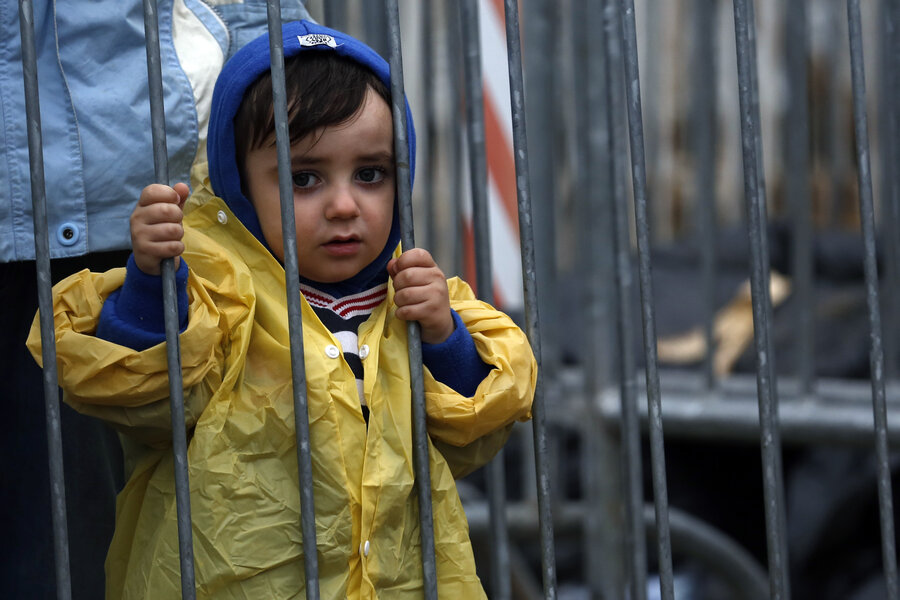New migrant route opens in Europe as Hungary seals border
Loading...
| Petisovci, Slovenia
Hundreds of people started arriving in Slovenia on Saturday as a new migrant route opened in Europe after Hungary sealed its border for their free flow, adding another hurdle in their frantic flight from wars and poverty toward what they hope is a better life in Western Europe.
The closure of Hungary's border with Croatia early Saturday caused redirections of thousands of people — including women and small children soaked in cold rain — further west toward Croatia's border with Slovenia, the small European Union-member state which has limited capacity to process large numbers wishing to head toward Austria and Germany.
This could leave thousands stranded in Croatia and further east and south in Serbia and Macedonia.
Several buses packed with migrants arrived in the Slovenian border town of Petisovci on Saturday from Croatia. Police spokeswoman Suzana Raus said that after processing, most of them will be transferred toward the Austrian border.
The U.N. refugee agency said Slovenia has the capacity to accept some 7,000 migrants a day.
UNHCR spokeswoman Caroline Van Buren said at Slovenia's border with Croatia Saturday that "all is going well" as the first groups of migrants started arriving to the small Alpine nation.
"We have been in cold since two in the morning in Serbia," said Omar Thaqfa, 33, from Mosul in Iraq. "We were sitting in the street. Very cold. Inshallah, I am going to Germany."
Slovenia, the country of some 2 million people, has said it would beef up border controls and create entry points for migrants to manage the influx, but would keep accepting migrants as long as Austria and Germany kept their borders open. Croatia has said it will close its border with Serbia if Slovenia does the same with Croatia.
Migrants had been coming through Croatia to get to Hungary and then further west. But Hungary blocked that route after midnight when police pulled a barbed-wire fence over a passage on the border with Croatia where about 140,000 migrants have passed since mid-September.
Croatian Interior Minister Ranko Ostojic said Hungary's decision won't stop the flow of hundreds of thousands of migrants from the Middle East, Asia and Africa who have been surging into Europe.
"Nobody can stop this flow without shooting," Ostojic said, adding that further closure of frontiers for migrants would cause "a domino effect and lot of troubles for all countries" that are on the migrant route.
Hungarian Foreign Minister Peter Szijjarto announced the decision to close the border after a meeting of the national security Cabinet on Friday.
Hungary decided to order the border clampdown after EU leaders who met Thursday in Brussels failed to agree on a plan backed by Hungary to send EU forces to block migrants from reaching Greece.
Szijjarto said in a statement Saturday that the government was defending Hungary and its citizens from the "mass wave of unidentified, uncontrolled migrants."
He has said normal border checkpoints with Croatia would remain open, though inspections will be tightened.
Although Croatia is also a member of the European Union, unlike Hungary it is not part of the Schengen zone of passport-free travel. Slovenia is in the Schengen zone.
Over 383,000 migrants have entered Hungary this year, nearly all passing through on their way to Germany and other destinations further west in the EU. The country clamped down on its border with Serbia with a similar razor wire fence on Sept. 15 and since then migrants have been taking a detour through Croatia to reach Hungary.
German Chancellor Angela Merkel told Saturday's edition of the daily Frankfurter Allgemeine Zeitung that Germany can control its borders but not close them completely — "that wouldn't even succeed with a fence, as the example of Hungary shows."
Thousands of new arrivals a day have stretched Germany's capacity to house refugees and other migrants. But Merkel said she won't promise "false solutions" because they wouldn't hold even for two weeks and would create bigger disappointment that the problem hasn't been resolved.
"I am working with all my power for sustainable solutions, and they don't depend on us Germans alone and will take time," she said.
Turkey's state-run news agency said 12 migrants have drowned after their boat sank off the Turkish coast in the Aegean sea. The Anadolu Agency said the Turkish coast guard rescued 25 other migrants from the sea.
Greece's coast guard said four children drowned when a boat carrying migrants sank off the small island of Kalolimnos.
The group was trying to reach the island the Greek island of Lesbos — an entry point for a majority of migrants making the journey from the nearby Turkish coast.





